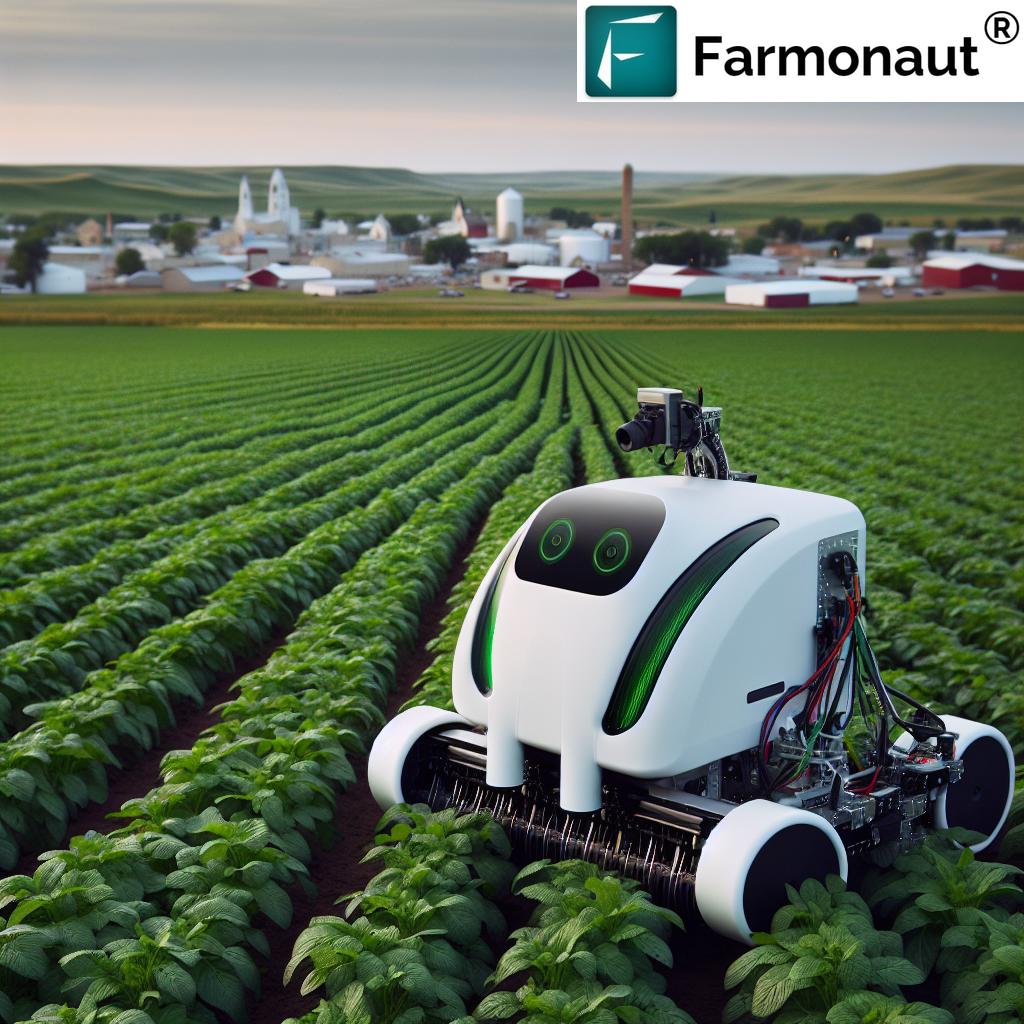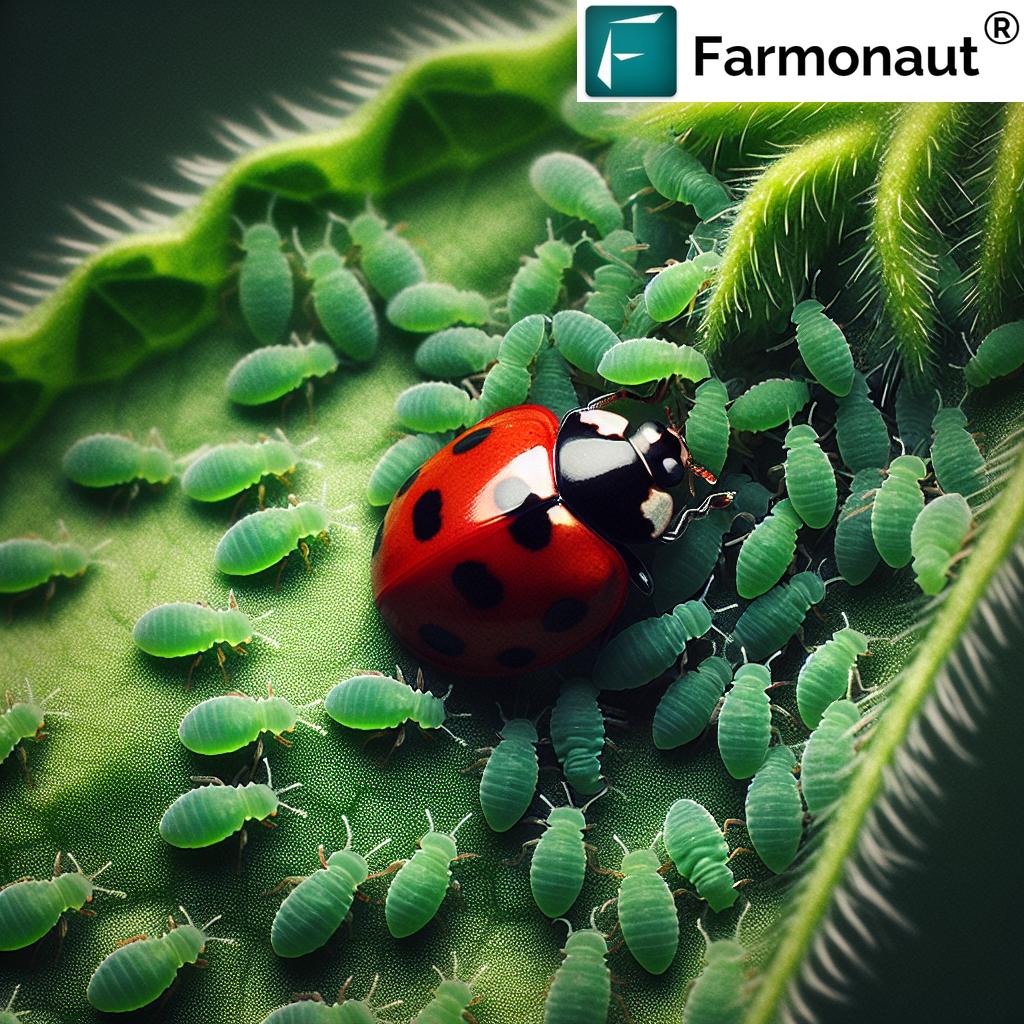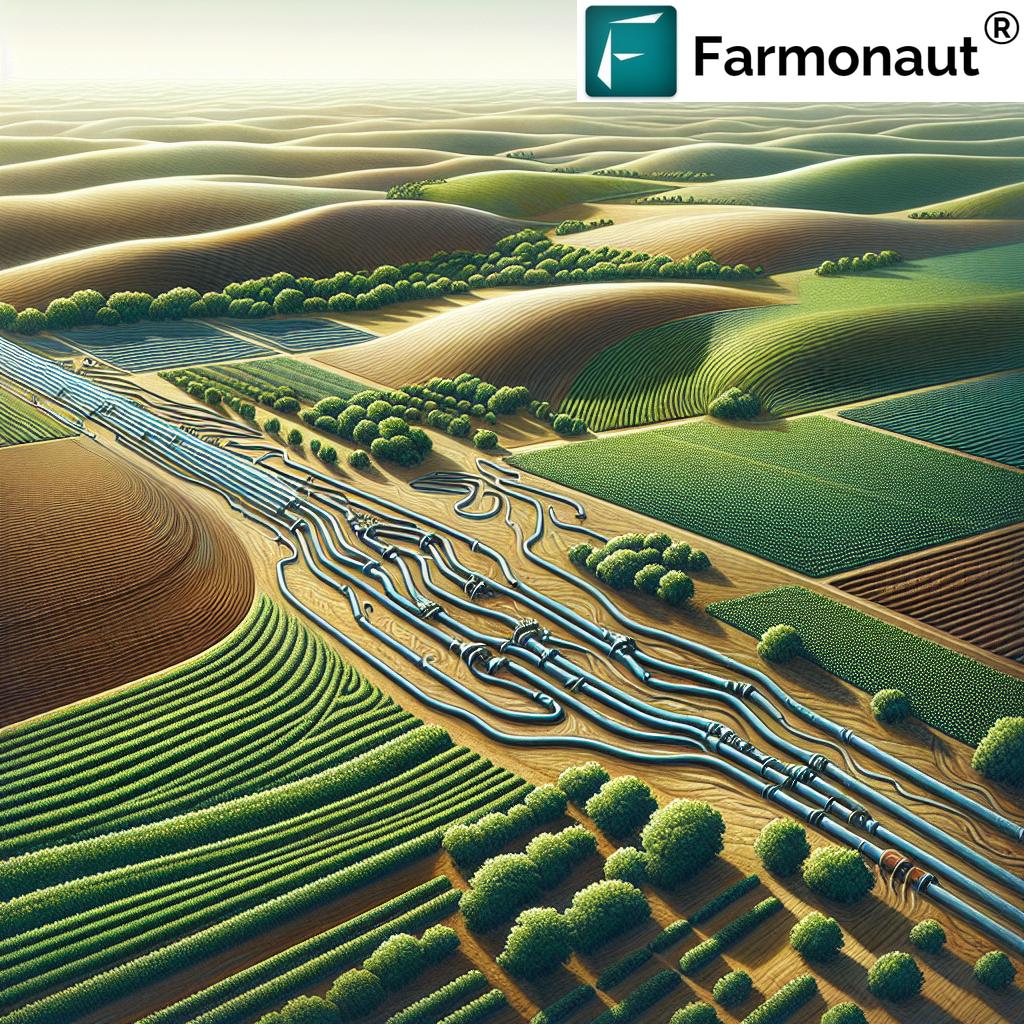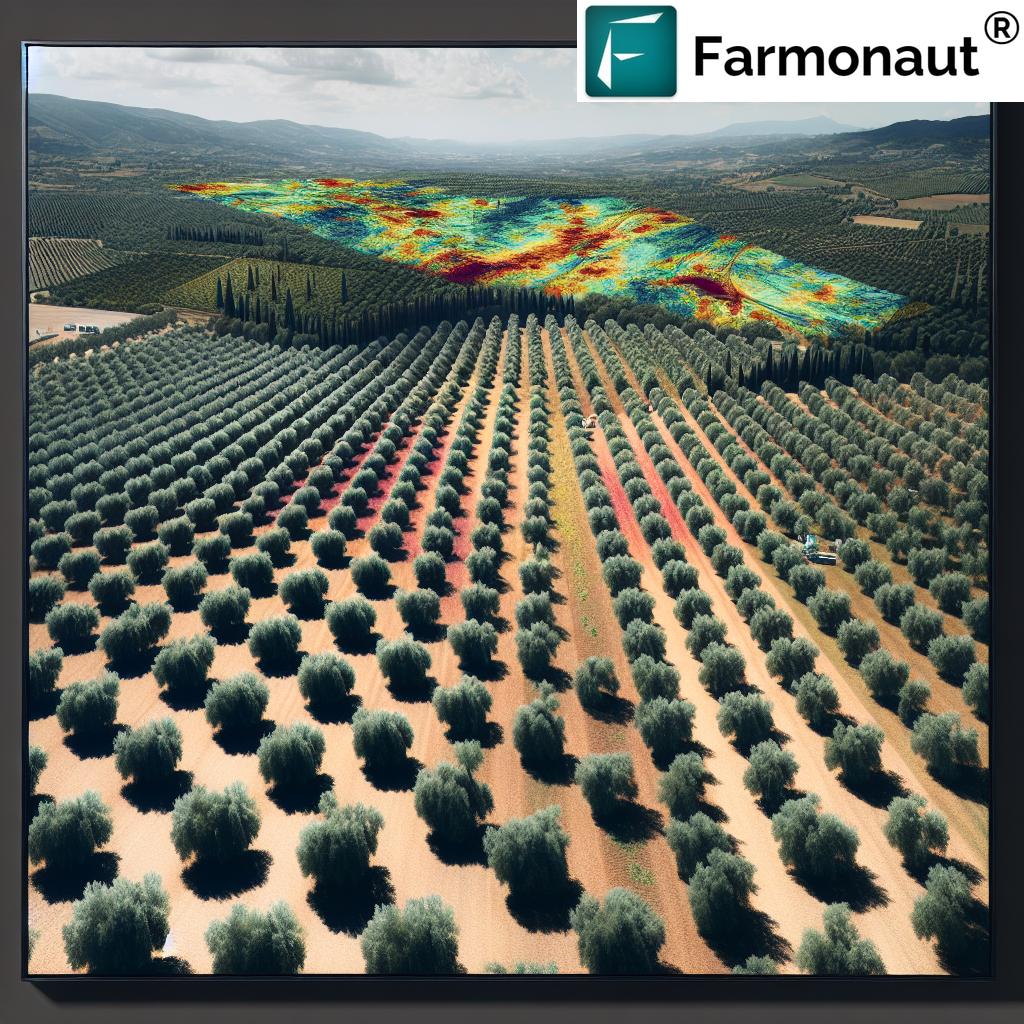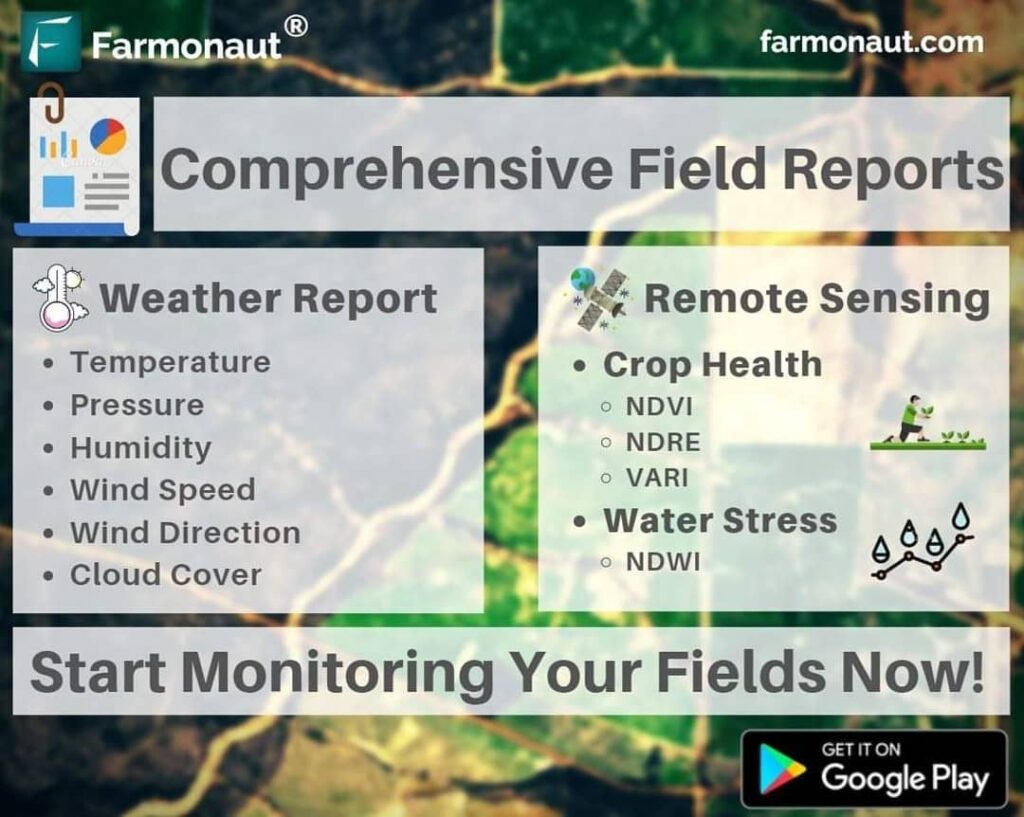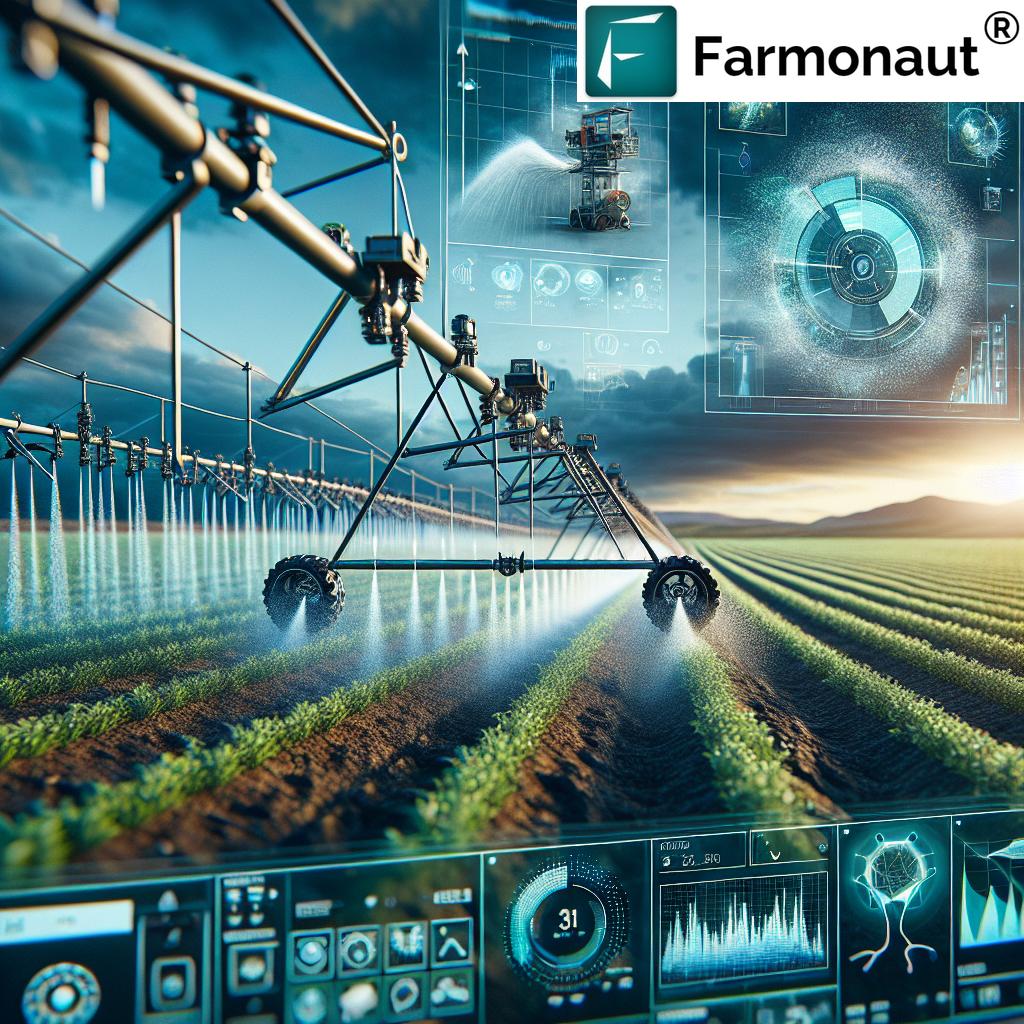Ultimate Planter Maintenance Checklist: Boost Your Crop Yield with Farmonaut’s Expert Guide
“Proper planter maintenance can increase crop yield by up to 20% through improved seed placement and spacing.”
Welcome to our comprehensive guide on planter maintenance! As we dive into the world of agricultural equipment upkeep, we’ll explore how proper care and attention to your planter can significantly boost your crop yield. At Farmonaut, we understand the critical role that well-maintained planters play in successful farming operations. That’s why we’ve compiled this expert guide to help you optimize your planter performance and maximize your harvest potential.
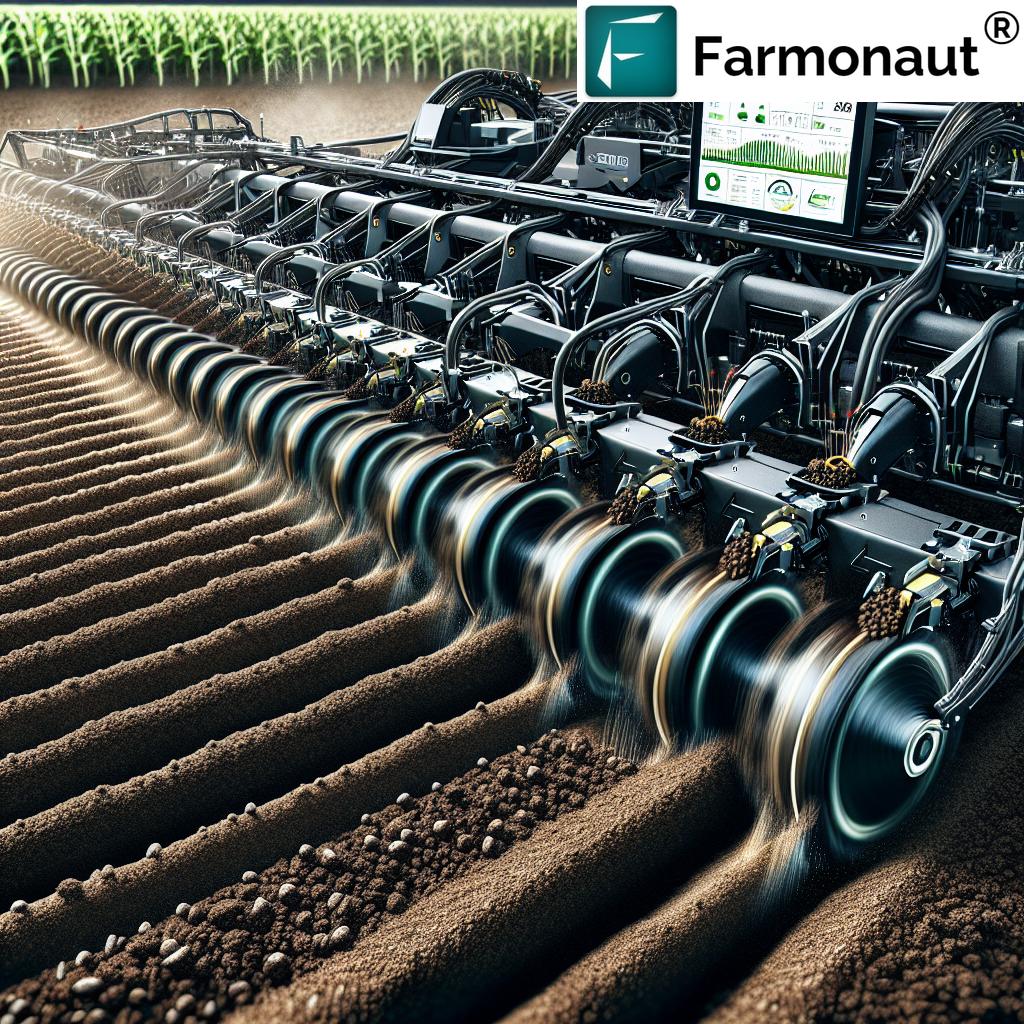
Before we delve into the nitty-gritty of planter maintenance, let’s take a moment to understand why this process is so crucial for your farm’s success. A well-maintained planter ensures optimal seed furrow creation, precise seed spacing, and consistent planting depth. These factors directly impact your crop’s emergence, growth, and ultimately, your yield.
The Importance of Preseason Planter Setup
Proper preseason planter setup is the foundation of a successful planting season. By dedicating time to thoroughly inspect and adjust your planter before hitting the fields, you can prevent costly downtime and ensure optimal performance when it matters most.
- Increased planting efficiency
- Improved seed placement accuracy
- Reduced risk of mechanical failures during planting
- Better overall crop emergence and stand uniformity
Now, let’s dive into our comprehensive planter maintenance checklist, designed to help you achieve peak performance this growing season.
1. Frame and Hitch Inspection
The planter frame and hitch are the backbone of your equipment. Ensuring they’re in top condition is crucial for maintaining proper alignment and stability during planting.
- Check frame for cracks or damage: Inspect the entire frame for any signs of wear, rust, or structural issues.
- Verify hitch height: Proper hitch height is essential for maintaining level toolbar operation.
- Lubricate all pivot points: Apply grease to hinges, folding mechanisms, and other moving parts.
- Tighten all bolts and fasteners: Loose components can lead to misalignment and poor performance.
2. Row Unit Alignment and Adjustment
Row unit alignment is critical for achieving consistent seed placement across the entire planter width. Misaligned row units can lead to uneven planting depth and poor seed-to-soil contact.
- Check parallel arms: Ensure they’re straight and not bent or damaged.
- Verify down pressure springs: Adjust as needed based on field conditions and crop type.
- Inspect gauge wheel arms: Look for wear and proper alignment with the opening disks.
- Adjust row cleaners: Set them to clear residue without moving excessive soil.
Explore Farmonaut’s precision agriculture solutions to complement your planter maintenance efforts and further optimize your crop management practices.
3. Seed Metering System Maintenance
The seed metering system is at the heart of your planter’s performance. Proper maintenance of this component is crucial for achieving optimal seed singulation and spacing.
- Clean and inspect seed meters: Remove any debris and check for worn parts.
- Calibrate vacuum or air pressure systems: Ensure proper suction for consistent seed pickup.
- Replace worn brushes and seals: These components are critical for maintaining proper vacuum.
- Verify seed disc condition: Look for wear on seed cells and replace if necessary.
- Test meter performance: Use a meter test stand to verify singulation accuracy.
“A well-maintained planter can achieve 99% accuracy in seed singulation, reducing overplanting and optimizing resource use.”
4. Seed Furrow Creation and Management
Creating the perfect seed furrow is essential for proper seed placement and emergence. Pay close attention to the components responsible for furrow creation and management.
- Inspect opening disks: Check for wear and proper alignment. Replace if diameter is reduced by more than 1/2 inch.
- Adjust disk scrapers: Ensure they’re making light contact with the disks to prevent soil buildup.
- Verify seed tube condition: Look for wear or damage that could affect seed placement.
- Check seed firmer tension: Adjust to ensure seeds are pressed firmly into the bottom of the furrow.

5. Closing Wheel System Optimization
Proper furrow closing is crucial for ensuring good seed-to-soil contact and promoting even emergence. The closing wheel system plays a vital role in this process.
- Inspect closing wheels: Check for wear, damage, or improper alignment.
- Adjust closing wheel down pressure: Set according to soil conditions to avoid over-compaction.
- Verify closing wheel stagger: Ensure proper spacing between wheels for optimal furrow closing.
- Check drag chains: If equipped, ensure they’re properly tensioned and not damaged.
Enhance your planting precision with Farmonaut’s satellite-based crop monitoring technology.
6. Drive System and Transmission Maintenance
A well-maintained drive system ensures consistent power delivery to all planter components, contributing to uniform seed spacing and depth control.
- Inspect all chains and sprockets: Look for wear, proper tension, and alignment.
- Lubricate bearings and drive components: Use high-quality grease to reduce friction and wear.
- Check hydraulic systems: Inspect hoses for leaks and verify proper fluid levels.
- Calibrate variable rate drives: Ensure accurate seed population control across different planting speeds.
7. Fertilizer and Chemical Application Systems
If your planter is equipped with fertilizer or chemical application systems, proper maintenance is crucial for ensuring accurate and consistent application rates.
- Clean all tanks and lines: Remove any residue from previous seasons to prevent clogging.
- Inspect pumps and motors: Verify proper operation and replace worn components as needed.
- Calibrate application rates: Ensure accurate delivery of fertilizers or chemicals.
- Check for leaks or damaged components: Replace any worn seals, hoses, or fittings.
Optimize your fertilizer application with Farmonaut’s precision agriculture tools.
8. No-Till Coulter Adjustment and Maintenance
For farmers practicing no-till or conservation tillage, properly adjusted and maintained coulters are essential for managing residue and creating an ideal seedbed.
- Inspect coulter blades: Check for wear and replace if diameter is reduced by more than 1/2 inch.
- Adjust coulter depth: Set to cut residue and penetrate soil without creating excessive tillage.
- Verify coulter alignment: Ensure they’re centered with the row units for consistent performance.
- Lubricate coulter bearings: Prevent premature wear and ensure smooth operation.
9. Precision Technology Calibration
Modern planters often come equipped with various precision technologies that require regular calibration and maintenance to ensure optimal performance.
- Update software and firmware: Ensure all systems are running the latest versions.
- Calibrate GPS systems: Verify accuracy for proper row spacing and section control.
- Check sensors and wiring: Inspect for damage and ensure proper connections.
- Verify down force control systems: Calibrate and test automatic down force adjustments.
Integrate Farmonaut’s advanced satellite and weather data API with your precision planting systems for enhanced decision-making.
10. Seed Treatment and Handling Systems
Proper maintenance of seed treatment and handling systems is crucial for ensuring uniform application and preventing damage to seeds during the planting process.
- Clean seed hoppers and conveyor systems: Remove any residue from previous plantings.
- Inspect seed treatment applicators: Verify proper operation and calibrate application rates.
- Check seed lubricant systems: Ensure proper delivery of talc or graphite to improve seed flow.
- Verify seed sensor operation: Test and calibrate sensors to accurately monitor seed flow and population.
Planter Maintenance Checklist Table
| Component | Maintenance Task | Frequency | Impact on Yield |
|---|---|---|---|
| Frame and Hitch | Inspect for damage, verify hitch height, lubricate pivot points | Annually | 5-10% |
| Row Units | Align units, adjust down pressure, inspect gauge wheels | Before each planting season | 10-15% |
| Seed Metering System | Clean meters, calibrate vacuum/air pressure, replace worn parts | Before each planting season | 15-20% |
| Furrow Openers | Check disk wear, adjust scrapers, verify seed tube condition | Before each planting season | 10-15% |
| Closing Wheels | Inspect wheels, adjust down pressure, verify alignment | Before each planting season | 5-10% |
| Drive System | Check chains, sprockets, and hydraulics; lubricate components | Annually | 5-10% |
| No-Till Coulters | Inspect blades, adjust depth, verify alignment | Before each planting season | 10-15% |
| Precision Technology | Update software, calibrate GPS, check sensors and wiring | Annually | 5-10% |
By following this comprehensive maintenance checklist, you can significantly improve your planter’s performance and potentially increase your crop yield by up to 20%.
Lubricant Application for Optimal Planter Performance
Proper planter lubricant application is essential for smooth operation and preventing issues such as seed bridging and inconsistent metering. Here are some key points to consider:
- Use the right type of lubricant: Talc and graphite are the most common options. Talc is best for humid conditions, while graphite works well in drier environments.
- Apply lubricant correctly: Mix thoroughly with seeds in the hopper, using the recommended amount based on seed type and conditions.
- Monitor and adjust: Keep an eye on seed flow and adjust lubricant application as needed throughout the planting process.
- Clean regularly: Remove excess lubricant buildup from seed meters and other components to maintain optimal performance.
Enhance your planting precision with Farmonaut’s advanced agricultural technologies.
Crop-Specific Planter Adjustments
Different crops require specific planter adjustments to ensure optimal seed placement and emergence. Here are some guidelines for common crops:
Corn
- Adjust row spacing typically to 30 inches
- Set planting depth between 1.5 to 2 inches
- Ensure proper singulation for consistent plant spacing
Soybeans
- Consider narrower row spacing (15-30 inches) for higher yields
- Set planting depth between 1 to 1.5 inches
- Adjust vacuum pressure for smaller seeds
Wheat
- Use drill attachments for precise seed placement
- Set planting depth between 1 to 1.5 inches
- Adjust seeding rate based on variety and growing conditions
Sunflower
- Use specialized sunflower plates or discs in the seed meter
- Set planting depth between 1 to 2.5 inches, depending on soil moisture
- Adjust down pressure for proper seed-to-soil contact
Optimize your crop-specific planting strategies with Farmonaut’s personalized agronomic insights.
Leveraging Technology for Planter Optimization
Modern agricultural technology can significantly enhance your planter’s performance and overall farm management. Here’s how you can leverage these tools:
- Satellite-based crop monitoring: Use Farmonaut’s advanced satellite imagery to track crop health and make informed decisions throughout the growing season.
- Precision agriculture tools: Implement variable rate planting and fertilizer application based on soil data and yield maps.
- Weather data integration: Utilize Farmonaut’s weather forecasting capabilities to optimize planting timing and adjust practices accordingly.
- Data-driven decision making: Analyze planting data alongside satellite imagery to continually refine your planting strategies and improve yields.
Explore Farmonaut’s comprehensive suite of agricultural technologies:
Frequently Asked Questions (FAQ)
- How often should I perform a complete planter maintenance check?
We recommend a thorough inspection and maintenance routine at least once a year, ideally before the planting season begins. - What’s the most common cause of poor seed singulation?
Worn or damaged seed meters, improper vacuum pressure, and incorrect seed disc selection are often the culprits behind poor singulation. - How can I determine if my planter’s opening disks need replacement?
Measure the diameter of the disks. If they’ve worn down by more than 1/2 inch from their original size, it’s time to replace them. - What role does Farmonaut play in optimizing planter performance?
While Farmonaut doesn’t directly maintain planters, our satellite-based crop monitoring and weather forecasting tools can help you make informed decisions about planting timing, seed selection, and overall crop management strategies. - How can I integrate Farmonaut’s technology with my existing planter setup?
Farmonaut’s platform is designed to complement your existing equipment. By using our satellite imagery and agronomic insights, you can fine-tune your planter settings based on real-time field conditions and historical performance data.
Conclusion
Proper planter maintenance is crucial for maximizing your crop yield and ensuring a successful growing season. By following this comprehensive checklist and leveraging advanced agricultural technologies like those offered by Farmonaut, you can optimize your planter’s performance and make more informed decisions throughout the planting process.
Remember, a well-maintained planter is just one piece of the puzzle. Combining proper equipment care with data-driven insights and precision agriculture techniques will help you achieve the best possible results for your farm.
Ready to take your farming operations to the next level? Explore Farmonaut’s suite of agricultural technology solutions and see how our satellite-based crop monitoring and weather forecasting tools can complement your planter maintenance efforts.
By combining proper planter maintenance with Farmonaut’s cutting-edge agricultural technologies, you’ll be well-equipped to face the challenges of modern farming and achieve optimal crop yields. Start your journey towards more efficient and productive farming today!





